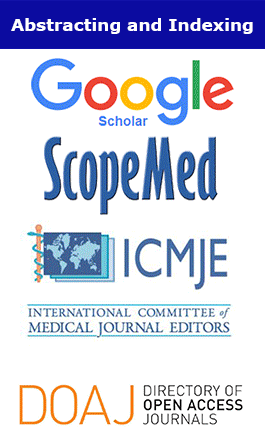Applied Medical Research. 2020;
7(2):(79-204)
The En Masse and the Sequential Retraction Procedures
Mhd Azhar Ibrahim Kharsa
Abstract
In this article, the authors discuss two preeminent notions in orthodontics; those are the
approaches of “En Masse Retraction” and “Sequential Retraction” in orthodontic cases. The
“Sequential Retraction” is identified by retraction of canines firstly, forming one group of
retracted canine and posterior teeth in the respective side, then retraction of the incisors.
Besides, the approach of “En Masse Retraction” is identified by retraction of the six anterior
teeth “as one group”. Sequential Retraction is called “two-phased retraction”, whereas “En
Masse Retraction” termed as “one-phased retraction”. Sequential Retraction has been
justified for its characteristic of upholding anchorage, while En Masse Retraction is beneficial
in keeping the alignment of the anterior teeth during treatment. Sequential Retraction has
two phases: Firstly, canines are moved posteriorly, then canines are congregated with the
posterior units of second premolars and first molars (in addition to second molars if they are
banded) to form one group. Secondly, the anterior four incisors are retracted. Sequential
Retraction may cause temporary spaces especially in between lateral incisors and canines
what are unwelcome sometimes. In addition, in the first phase of sequential retraction, it
is recommended that a “stop” on the mesial of the molar tube be placed (Tweed et al), to
“maintain the anchorage” by preventing its “burning” (by a potential movement of the first
molar mesially) [1]. Nonetheless, this stop has its own reaction on the pertinent incisors,
consequently the incisors move anteriorly little bit, in the canine retraction phase, what
in turn, increases the burden on the anchorage units, during the “phase-two” of incisors
retraction. In other word, the conception that sequential retraction is more “harmless”
towards the anchorage units is gradually becoming a debatable issue. Furthermore, an
advantage of the “En Masse” retraction in maintaining the “Leveling of Alignment” of
anterior teeth should be taken into account by clinician. By applying the “theory of Optimal
Force Values”, (which depends on using continuous low force, as minimal as available, and
simultaneously over the due threshold that is sufficient to cause tooth movement), it is
available to achieve canines and incisors “en masse” retracted without such an overload
onto anchorage segments. As the standpoint would be to apply optimal forces on the
anterior teeth, with least counteracted movements onto anchorage units proposing forces
dissipation until be below the sufficient threshold for posterior teeth movement.

